Topical emollient for preventing infection in preterm infants
- PMID: 33961715
- PMCID: PMC8104155
- DOI: 10.1002/14651858.CD001150.pub4
Topical emollient for preventing infection in preterm infants
Abstract
Background: Breakdown of the developmentally immature epidermal barrier may permit entry for micro-organisms leading to invasive infection in preterm infants. Topical emollients may improve skin integrity and barrier function and thereby prevent invasive infection, a major cause of mortality and morbidity in preterm infants.
Objectives: To assess the effect of topical application of emollients (ointments, creams, or oils) on the risk of invasive infection and mortality in preterm infants.
Search methods: We searched CENTRAL via Cochrane Register of Studies (CRS) Web and MEDLINE via Ovid (updated 08 January 2021) and the reference lists of retrieved articles.
Selection criteria: Randomised or quasi-randomised controlled trials that assessed the effect of prophylactic application of topical emollient on the risk of invasive infection, mortality, other morbidity, and growth and development in preterm infants.
Data collection and analysis: We used the standard methods of Cochrane Neonatal. Two review authors separately evaluated trial quality, extracted data, and synthesised effect estimates using risk ratio (RR), risk difference (RD), and mean difference. We used the GRADE approach to assess the certainty of evidence for effects on mortality and invasive infection.
Main results: We included 22 trials with a total of 5578 infant participants. The main potential sources of bias were lack of clarity on the methods used to generate random sequences and conceal allocation in half of the trials, and lack of masking of parents, caregivers, clinicians, and investigators in all of the trials. Eight trials (2086 infants) examined the effect of topical ointments or creams. Most participants were very preterm infants cared for in healthcare facilities in high-income countries. Meta-analyses suggested that topical ointments or creams may have little or no effect on invasive infection (RR 1.13, 95% confidence interval (CI) 0.97 to 1.31; low certainty evidence) or mortality (RR 0.94, 95% CI 0.82 to 1.08; low certainty evidence). Fifteen trials (3492 infants) assessed the effect of topical plant or vegetable oils. Most of these trials were undertaken in low- or middle-income countries and were based in healthcare facilities. One large (2249 infants) community-based trial occurred in a rural field practice in India. Meta-analyses suggested that topical oils may reduce invasive infection (RR 0.71, 95% CI 0.52 to 0.96; I² = 52%; low certainty evidence) but have little or no effect on mortality (RR 0.94, 95% CI 0.82 to 1.08, I² = 3%; low certainty evidence). One trial (316 infants) that compared petroleum-based ointment versus sunflower seed oil in very preterm infants in Bangladesh showed little or no effect on invasive infection (RR 0.91, 95% CI 0.57 to 1.46; low certainty evidence), but suggested that ointment may lower mortality slightly (RR 0.82, 95% CI 0.68 to 0.98; RD -0.12, 95% CI -0.23 to -0.01; number needed to treat for an additional beneficial outcome 8, 95% CI 4 to 100; low certainty evidence). One trial (64 infants) that assessed the effect of coconut oil versus mineral oil in preterm infants with birth weight 1500 g to 2000 g in India reported no episodes of invasive infection or death in either group (very low certainty evidence).
Authors' conclusions: The level of certainty about the effects of emollient therapy on invasive infection or death in preterm infants is low. Since these interventions are mostly inexpensive, readily accessible, and generally acceptable, further good-quality randomised controlled trials in healthcare facilities, and in community settings in low- or middle-income countries, may be justified.
Copyright © 2021 The Cochrane Collaboration. Published by John Wiley & Sons, Ltd.
Conflict of interest statement
None.
Figures

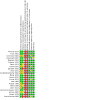

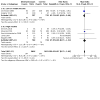
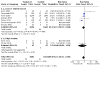
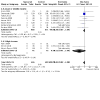
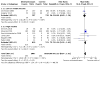
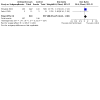
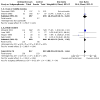
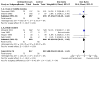
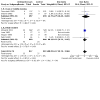
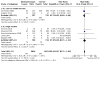

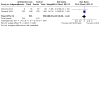

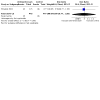
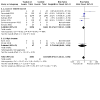
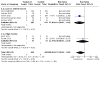
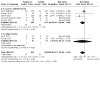
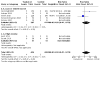
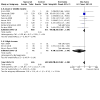
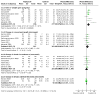
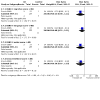
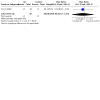
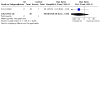
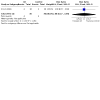
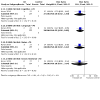
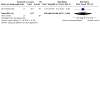
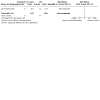
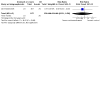
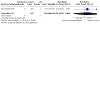
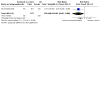
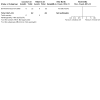
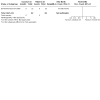
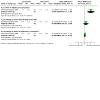
Update of
-
Topical emollient for preventing infection in preterm infants.Cochrane Database Syst Rev. 2016 Jan 29;2016(1):CD001150. doi: 10.1002/14651858.CD001150.pub3. Cochrane Database Syst Rev. 2016. Update in: Cochrane Database Syst Rev. 2021 May 7;5:CD001150. doi: 10.1002/14651858.CD001150.pub4. PMID: 26824786 Free PMC article. Updated.
References
References to studies included in this review
Alkharfy 2014 {published data only}
-
- AlKharfy T, Ba-Abbad R, Hadi A, Alfaleh K. Use of topical petroleum jelly for prevention of sepsis in very low-birthweight infants: a prospective, randomised controlled trial. Paediatrics and International Child Health 2014;34(3):194-7. [PMID: ] - PubMed
Arora 2005 {published data only}
-
- Arora J, Kumar A, Ramji S. Effect of oil massage on growth and neurobehavior in very low birth weight preterm neonates. Indian Pediatrics 2005;42(11):1092-100. [PMID: ] - PubMed
Darmstadt 2004 {published data only}
-
- Darmstadt GL, Badrawi N, Law PA, Ahmed S, Bashir M, Iskander I, et al. Topically applied sunflower seed oil prevents invasive bacterial infections in preterm infants in Egypt: a randomized, controlled clinical trial. Pediatric Infectious Disease Journal 2004;23(8):719-25. [PMID: ] - PubMed
-
- Darmstadt GL, Mao-Qiang M. Topical therapy to improve epidermal barrier function and prevent infections in preterm infants in developing countries. Pediatric Research 2003;53:316A.
Darmstadt 2005 {published data only}
-
- Darmstadt GL, Ahmed S, Ahmed AN, Saha SK. Mechanism for prevention of infection In preterm neonates by topical emollients: a randomized, controlled clinical trial. Pediatric Infectious Disease Journal 2014;33(11):1124-7. [PMID: ] - PubMed
-
- Darmstadt GL, Saha SK, Ahmed AS, Choi Y, Chowdhury MA, Islam M, et al. Effect of topical emollient treatment of preterm neonates in Bangladesh on invasion of pathogens into the bloodstream. Pediatric Research 2007;61(5 Pt 1):588-93. [PMID: ] - PubMed
-
- Darmstadt GL, Saha SK, Ahmed AS, Chowdhury MA, Law PA, Ahmed S, et al. Effect of topical treatment with skin barrier-enhancing emollients on nosocomial infections in preterm infants in Bangladesh: a randomised controlled trial. Lancet 2005;365(9464):1039-45. [PMID: ] - PubMed
Edwards 2004 {published data only}
-
- Edwards WH, Conner JM, Soll RF, Vermont Oxford Network Neonatal Skin Care Study Group. The effect of prophylactic ointment therapy on nosocomial sepsis rates and skin integrity in infants with birth weights of 501 to 1000 g. Pediatrics 2004;113(5):1195-203. [PMID: ] - PubMed
-
- Edwards WH, Conner JM, Soll RF. The effect of Aquaphor Original Emollient Ointment on nosocomial sepsis rates and skin integrity in infants of birth weight 501 to 1000 grams. Pediatric Research 2001;49:388A. - PubMed
Erdemir 2015 {published data only}
-
- Erdemir A, Kahramaner Z, Yuksel Y, Cosar H, Turkoglu E, Sutcuoglu S, et al. The effect of topical ointment on neonatal sepsis In preterm infants. The Journal of Maternal-Fetal & Neonatal Medicine 2014;28(1):33-6. [PMID: ] - PubMed
Fallah 2013 {published data only}
-
- Fallah R, Akhavan Karbasi S, Golestan M, Fromandi M. Sunflower oil versus no oil moderate pressure massage leads to greater increases in weight in preterm neonates who are low birth weight. Early Human Development 2013;89(9):769-72. [PMID: ] - PubMed
Farhat 2010 {published data only}
-
- Farhat AS, Mohammadzadeh A, Amiri R, Amiri M. Effect of dermal sunflower oil on growth of low birth weight preterm infants. In: XXII European Congress of Perinatal Medicine; 2010 May 26-29; Granada, Spain. Granada, Spain, 2010.
Jabraeile 2016 {published data only}
Kanti 2014 {published data only}
-
- Kanti V, Grande C, Stroux A, Buhrer C, Blume-Peytavi U, Garcia Bartels N. Influence of sunflower seed oil on the skin barrier function of preterm infants: a randomized controlled trial. Dermatology 2014;229(3):230-9. [PMID: ] - PubMed
Kiechl‐Kohlendorfer 2008 {published data only}
-
- Berger C, Inzinger R. Study of skin care in premature and newborn infants [Studie zur Hautpflege bei Fruh- und Neugeborenen.]. Kinderkrankenschwester : Organ der Sektion Kinderkrankenpflege / Deutsche Gesellschaft fur Sozialpadiatrie und Deutsche Gesellschaft fur Kinderheilkunde 2009;28(3):116-25. - PubMed
-
- Kiechl-Kohlendorfer U, Berger C, Inzinger R. The effect of daily treatment with an olive oil/lanolin emollient on skin integrity in preterm infants: a randomized controlled trial. Pediatric Dermatology 2008;25(2):174-8. [PMID: ] - PubMed
Konar 2019 {published data only}
-
- Konar M C, Islam K, Roy A, Ghosh T. Effect of virgin coconut oil application on the skin of preterm newborns: a randomized controlled trial. Journal of Tropical Pediatrics 2019;66(2):129-135. - PubMed
Kukreja 2018 {published data only}
-
- Kukreja B, Kumar A, Satyanarayana K. Effect on nosocomial sepsis of topical oil application, skin condition, and care practice device usage in preterm neonates: A randomized controlled trial. Indian Journal of Child Health 2018;5:689-693.
Kumar 2013 {published data only}
-
- Kumar J, Upadhyay A, Dwivedi AK, Gothwal S, Jaiswal V, Aggarwal S. Effect of oil massage on growth in preterm neonates less than 1800 g: A randomized control trial. Indian Journal of Pediatrics 2013;80(6):465-9. [PMID: ] - PubMed
Lane 1993 {published data only}
-
- Lane AT, Drost SS. Effects of repeated application of emollient cream to premature neonates' skin. Pediatrics 1993;92(3):415-9. [PMID: ] - PubMed
Nopper 1996 {published data only}
-
- Nopper AJ, Horii KA, Sookdeo-Drost S, Wang TH, Mancini AJ, Lane AT. Topical ointment therapy benefits premature infants. Journal of Pediatrics 1996;128(5 Pt 1):660-9. [PMID: ] - PubMed
Pabst 1999 {published data only}
-
- Pabst RC, Starr KP, Qaiyumi S, Schwalbe RS, Gewolb IH. The effect of application of aquaphor on skin condition, fluid requirements, and bacterial colonization in very low birth weight infants. Journal of Perinatology 1999;19(4):278-83. [PMID: ] - PubMed
Salam 2015 {published data only}
-
- Salam RA, Darmstadt GL, Bhutta ZA. Effect of emollient therapy on clinical outcomes in preterm neonates in Pakistan: a randomised controlled trial. Archives of Disease in Childhood. Fetal and Neonatal Edition 2015;100(3):F210-5. [PMID: ] - PubMed
Sankaranarayanan 2005 {published data only}
-
- Sankaranarayanan K, Mondkar JA, Chauhan MM, Mascarenhas BM, Mainkar AR, Salvi RY. Oil massage in neonates: an open randomized controlled study of coconut versus mineral oil. Indian Pediatrics 2005;42(9):877-84. [PMID: ] - PubMed
Soriano 2000 {published data only}
-
- Soriano CR, Martinez FE, Jorge SM. Cutaneous application of vegetable oil as a coadjutant in the nutritional management of preterm infants. Journal of Pediatric Gastroenterology and Nutrition 2000;31(4):387-90. [PMID: ] - PubMed
Strunk 2018 {published data only}
-
- Strunk T, Nathan E, Sharp M, Doherty D, Patole S. Developmental outcomes following topical coconut oil in very preterm infants. Neonatology 2019;116(3):302-304. - PubMed
-
- Strunk T, Pupala S, Hibbert J, Doherty D, Patole S. Topical coconut oil in very preterm infants: an open-label randomised controlled trial. Neonatology 2018;113(2):146-51. [PMID: ] - PubMed
Vaivre‐Douret 2008 {published data only}
-
- Vaivre-Douret L, Oriot D, Blossier P, Py A, Kasolter-Pere M, Zwang J. The effect of multimodal stimulation and cutaneous application of vegetable oils on neonatal development in preterm infants: a randomized controlled trial. Child: Care, Health and Development 2009;35(1):96-105. [PMID: ] - PubMed
References to studies excluded from this review
Abdallah 2013 {published data only}
-
- Abdallah B, Badr LK, Hawwari M. The efficacy of massage on short and long term outcomes in preterm infants. Infant Behavior & Development 2013;36(4):662-9. [PMID: ] - PubMed
Ang 2012 {published data only}
Beeram 2006 {published data only}
Berger 2009 {published data only}
-
- Berger C, Inzinger R. Study of skin care in premature and newborn infants [Studie zur Hautpflege bei Fruh- und Neugeborenen.]. Kinderkrankenschwester : Organ der Sektion Kinderkrankenpflege / Deutsche Gesellschaft fur Sozialpadiatrie und Deutsche Gesellschaft fur Kinderheilkunde 2009;28(3):116-25. [PMID: ] - PubMed
Brandon 2010 {published data only}
-
- Brandon DH, Coe K, Hudson-Barr D, Oliver T, Landerman LR. Effectiveness of No-Sting skin protectant and Aquaphor on water loss and skin integrity in premature infants. Journal of Perinatology 2010;30(6):414-9. [PMID: ] - PubMed
Brice 1981 {published data only}
Caglar 2020 {published data only}
-
- Caglar S, Yildiz GK, Bakoglu I, Salihoglu O. The effect of sunflower seed and almond oil on preterm infant skin: a randomized controlled trial. Advances in Skin & Wound Care 2020;33(8):1-6. - PubMed
Campbell 2000 {published data only}
-
- Campbell JR, Zaccaria, E, Baker CJ. Systemic candidiasis in extremely low birth weight infants receiving topical petrolatum ointment for skin care: a case-control study. Pediatrics 2000;105(5):1041-5. [PMID: ] - PubMed
Diego 2008 {published data only}
Ferber 2005 {published data only}
-
- Ferber SG, Feldman R, Kohelet D, Kuint J, Dollberg S, Arbel E, et al. Massage therapy facilitates mother-infant interaction in premature infants. Infant Behavior & Development 2005;28(1):74-81.
Fernandez 1987 {published data only}
-
- Fernandez A, Patkar S, Chawla C, Taskar T, Prabhu SV. Oil application in preterm babies--a source of warmth and nutrition. Indian Pediatrics 1987;24(12):1111-6. [PMID: ] - PubMed
Fernandez 2005 {published data only}
-
- Fernandez AR, Krishnamoorthy G, Patil N, Mondkar JA, Swar BD. Transcutaneous absorption of oil in preterm babies--a pilot study. Indian Pediatrics 2005;42(3):255-8. [PMID: ] - PubMed
Guzzetta 2011 {published data only}
-
- Guzzetta A, D'Acunto MG, Carotenuto M, Berardi N, Bancale A, Biagioni E, et al. The effects of preterm infant massage on brain electrical activity. Developmental Medicine and Child Neurology 2011;53 Suppl 4:46-51. [PMID: ] - PubMed
Jansi 2008 {published data only}
-
- Jansi LB. Effect of oil massage on changes in weight and neurobehavioural response of low birth weight babies. The Nursing Journal of India 2008;99(11):256-8. [PMID: ] - PubMed
Mathai 2001 {published data only}
-
- Mathai S, Fernandez A, Mondkar J, Kanbur W. Effects of tactile-kinesthetic stimulation in preterms: a controlled trial. Indian Pediatrics 2001;38(10):1091-8. [PMID: ] - PubMed
Mendes 2008 {published data only}
-
- Mendes EW, Procianoy RS. Massage therapy reduces hospital stay and occurrence of late-onset sepsis in very preterm neonates. Journal of Perinatology 2008;28(12):815-20. [PMID: ] - PubMed
Montaseri 2020 {published data only}
-
- Montaseri S, Barati R, Edraki M, Hemmati F. The effects of massage therapy with or without physical exercises on the weight of premature infants admitted to the neonatal intensive care unit: a randomized clinical trial. Shiraz E-medical Journal 2020;21(2):e91033.
Rutter 1981 {published data only}
Smith 2013 {published data only}
Solanki 2005a {published data only}
-
- Solanki K, Matnani M, Kale M, Joshi K, Bavdekar A, Bhave S, et al. Transcutaneous absorption of topically massaged oil in neonates. Indian Pediatrics 2005;42(10):998-1005. [PMID: ] - PubMed
Taheri 2018 {published data only}
-
- Taheri PA, Goudarzi Z, Shariat M, Nariman S, Matin EN. The effect of a short course of moderate pressure sunflower oil massage on the weight gain velocity and length of NICU stay in preterm infants. Infant Behavior and Development 2018;50:22-27. - PubMed
Wananukul 2001 {published data only}
-
- Wananukul S, Praisuwanna P, Kescorncam K. Effects of clear topical ointment on transepidermal water loss in jaundiced preterm infants receiving phototherapy. Journal of the Medical Association of Thailand 2001;84(6):837-41. [PMID: ] - PubMed
Wananukul 2002 {published data only}
-
- Wananukul S, Praisuwanna P. Clear topical ointment decreases transepidermal water loss in jaundiced preterm infants receiving phototherapy. Journal of the Medical Association of Thailand 2002;85(1):102-6. [PMID: ] - PubMed
References to studies awaiting assessment
Hu 2014 {published data only}
-
- Hu X, Zhang Y. Effect of topically applied sunflower seed oil in preterm infants. Pediatric Critical Care Medicine 2014;15(4 Suppl 1):144-5.
Maamouri 2018 {published data only}
-
- Maamouri G, Abdolhossein Attar M, Rakhshandeh H, Lotfi M, Zakerihamidi M, Boskabadi H. Effect of topical sunflower oil in preventing nosocomial infections in premature infants. The Iranian Journal of Obstetrics, Gynecology and Infertility 2018;21(9):10-17.
Nangia 2015 {published data only}
-
- Nangia S, Paul VK, Deorari AK, Sreenivas V, Agarwal R, Chawla D. Topical oil application and trans-epidermal water loss in preterm very low birth weight infants- a randomized trial. Journal of Tropical Pediatrics 2015;Sep 3:[Epub ahead of print]. [PMID: ] - PubMed
Saeidi 2014 {published data only}
-
- Saeedi R, Gholami M, Dinparvar S, Kabirian M. Transcutaneous feeding: the effect of massage with coconut oil on weight gaining in preterm newborns. Iranian Red Cresent Medical Journal 2011;13:666-9.
-
- Saeidi R, Ghorbani Z, Moghaddam AS. The effect of massage with medium-chain triglyceride oil on weight gain in premature neonates. Acta Medica Iranica 2014;53:134-8. - PubMed
References to ongoing studies
Kumar 2020 {published data only}
-
- Kumar V, Kumar A, Mishra S, Ashraf S, Singh S, Kan P, et al. Impact of emollient therapy with sunflower seed oil on survival of newborn infants in Uttar Pradesh, India: a community-based, cluster randomised, open-label controlled trial. ISRCTN Registry 2020;https://doi.org/10.1186/ISRCTN38965585.
Additional references
Adams‐Chapman 2006
-
- Adams-Chapman I, Stoll BJ. Neonatal infection and long-term neurodevelopmental outcome in the preterm infant. Current Opinion in Infectious Diseases 2006;19(3):290-7. [PMID: ] - PubMed
Bell 1978
Berrington 2012
-
- Berrington JE, Hearn RI, Bythell M, Wright C, Embleton ND. Deaths in preterm infants: changing pathology over 2 decades. The Journal of Pediatrics 2012;160:49-53.e1. [PMID: ] - PubMed
BNF for Children 2020
-
- Paediatric Formulary Committee. BNF for Children. London, UK: BMJ Group, Pharmaceutical Press, and RCPCH Publications, 2020.
Camacho‐Gonzalez 2013
Cartlidge 2000
-
- Cartlidge P. The epidermal barrier. Seminars in Neonatology 2000;5(4):273-80. [PMID: ] - PubMed
Darmstadt 2002a
-
- Darmstadt GL, Mao-Qiang M, Chi E, Saha SK, Ziboh VA, Black RE, et al. Impact of topical oils on the skin barrier: possible implications for neonatal health in developing countries. Acta Paediatrica 2002;91(5):546-54. [PMID: ] - PubMed
Darmstadt 2002b
-
- Darmstadt GL, Saha SK. Traditional practice of oil massage of neonates in Bangladesh. Journal of Health, Population, and Nutrition 2002;20(2):184-8. [PMID: ] - PubMed
Dyer 2013
-
- Dyer JA. Newborn skin care. Seminars in Perinatology 2013;37(1):3-7. [PMID: ] - PubMed
Evans 1986
-
- Evans NJ, Rutter N. Development of the epidermis in the newborn. Biology of the Neonate 1986;49(2):74-80. [PMID: ] - PubMed
Gordon 2006
-
- Gordon A, Isaacs D. Late onset neonatal Gram-negative bacillary infection in Australia and New Zealand: 1992-2002. The Pediatric Infectious Disease Journal 2006;25(1):25-9. [PMID: ] - PubMed
GRADEpro GDT [Computer program]
-
- GRADEpro GDT. Version accessed 8 May 2018. Hamilton (ON): McMaster University (developed by Evidence Prime). Available at gradepro.org.
Harbord 2006
Harpin 1983
-
- Harpin VA, Rutter N. Barrier properties of the newborn infant's skin. Journal of Pediatrics 1983;102(3):419-25. [PMID: ] - PubMed
Higgins 2011
-
- Higgins JP, Altman DG, Sterne JA, on behalf of the Cochrane Statistical Methods Group and the Cochrane Bias Methods Group. Chapter 8: Assessing risk of bias in included studies. In: Higgins JP, Green S, editor(s). Cochrane Handbook for Systematic Reviews of Interventions Version 5.1.0 (updated March 2011). The Cochrane Collaboration, 2011. Available from handbook.cochrane.org.
Higgins 2019
-
- Higgins JP, Thomas J, Chandler J, Cumpston M, Li T, Page MJ, et al (editors). Cochrane Handbook for Systematic Reviews of Interventions version 6.1 (updated September 2020). Cochrane, 2020. Available from www.training.cochrane.org/handbook.
ICCROP 2005
-
- International Committee for the Classification of Retinopathy of Prematurity. The International Classification of Retinopathy of Prematurity revisited. Archives of Ophthalmology 2005;123(7):991-9. - PubMed
Isaacs 2003
Isaacs 2004
Kelleher 2021
Khan 2017
-
- Khan AM, Morris SK, Bhutta ZA. Neonatal and perinatal infections. Pediatric Clinics 2017;64(4):785-98. - PubMed
Lee 1993
Marchini 2002
-
- Marchini G, Lindow S, Brismar H, Stabi B, Berggren V, Ulfgren AK, et al. The newborn infant is protected by an innate antimicrobial barrier: peptide antibiotics are present in the skin and vernix caseosa. The British Journal of Dermatology 2002;147(6):1127-34. [PMID: ] - PubMed
Mullany 2005
Ness 2013
-
- Ness MJ, Davis DM, Carey WA. Neonatal skin care: a concise review. International Journal of Dermatology 2013;52(1):14-22. [PMID: ] - PubMed
Ovelman 2020
-
- Ovelman C, Eckert C, Friesen C. Validating Cochrane Neonatal’s standard search databases: is it okay to stop searching Embase? In: Advances in Evidence Synthesis: special issue. Cochrane Database of Systematic Reviews 2020;(9(Suppl 1): 320). [DOI: 10.1002/14651858.CD202001] - DOI
Pickens 2000
-
- Pickens WL, Warner RR, Boissy YL, Boissy RE, Hoath SB. Characterization of vernix caseosa: water content, morphology, and elemental analysis. Journal of Investigative Dermatology 2000;115(5):875-81. [PMID: ] - PubMed
Pupala 2019
-
- Pupala SS, Rao SD, Strubk T, Patole S. Topical application of coconut oil to the skin of preterm infants: a systematic review. European Journal of Pediatrics 2019;178(9):1317-24. [DOI: ] - PubMed
Review Manager 2020 [Computer program]
-
- Review Manager 5 (RevMan 5). Version 5.4. Copenhagen: Nordic Cochrane Centre: The Cochrane Collaboration, 2020.
Rutter 1988
-
- Rutter N. The immature skin. British Medical Bulletin 1988;44(4):957-70. [PMID: ] - PubMed
Rutter 2000
-
- Rutter N. Clinical consequences of an immature barrier. Seminars in Neonatology 2000;5(4):281-7. [PMID: ] - PubMed
Salam 2013
Samanta 2011
-
- Samanta S, Farrer K, Breathnach A, Heath PT. Risk factors for late onset gram-negative infections: a case-control study. Archives of Disease in Childhood. Fetal and Neonatal Edition 2011;96(1):F15-8. [PMID: ] - PubMed
Schünemann 2013
-
- Schünemann H, Brożek J, Guyatt G, Oxman A, editors, GRADE Working Group. GRADE handbook for grading quality of evidence and strength of recommendations. Updated October 2013. Available from www.guidelinedevelopment.org/handbook (accessed prior to 5 May 2021).
Stoll 2002
-
- Stoll BJ, Hansen N, Fanaroff AA, Wright LL, Carlo WA, Ehrenkranz RA, et al. Late-onset sepsis in very low birth weight neonates: the experience of the NICHD Neonatal Research Network. Pediatrics 2002;110(2 Pt 1):285-91. [PMID: ] - PubMed
Stoll 2004
-
- Stoll BJ, Hansen NI, Adams-Chapman I, Fanaroff AA, Hintz SR, Vohr B, et al. Neurodevelopmental and growth impairment among extremely low-birth-weight infants with neonatal infection. JAMA 2004;292(19):2357-65. [PMID: ] - PubMed
Vergnano 2011
-
- Vergnano S, Menson E, Kennea N, Embleton N, Russell AB, Watts T, et al. Neonatal infections in England: the NeonIN surveillance network. Archives of Disease in Childhood. Fetal and Neonatal Edition 2011;96(1):F9-F14. [PMID: ] - PubMed
Zaidi 2005
-
- Zaidi AK, Huskins WC, Thaver D, Bhutta ZA, Abbas Z, Goldmann DA. Hospital-acquired neonatal infections in developing countries. Lancet 2005;365(9465):1175-88. [PMID: ] - PubMed
References to other published versions of this review
Cleminson 2016
Conner 2008
Edwards 2001
-
- Edwards WH, Conner JM, Soll RF et al. The effect of Aquaphor Original Emollient Ointment on nosocomial sepsis rates and skin integrity in infants of birth weight 501 to 1000 grams. Pediatric Research 2001;49:388A. - PubMed
Publication types
MeSH terms
Substances
LinkOut - more resources
Full Text Sources
Other Literature Sources
Medical
Miscellaneous

